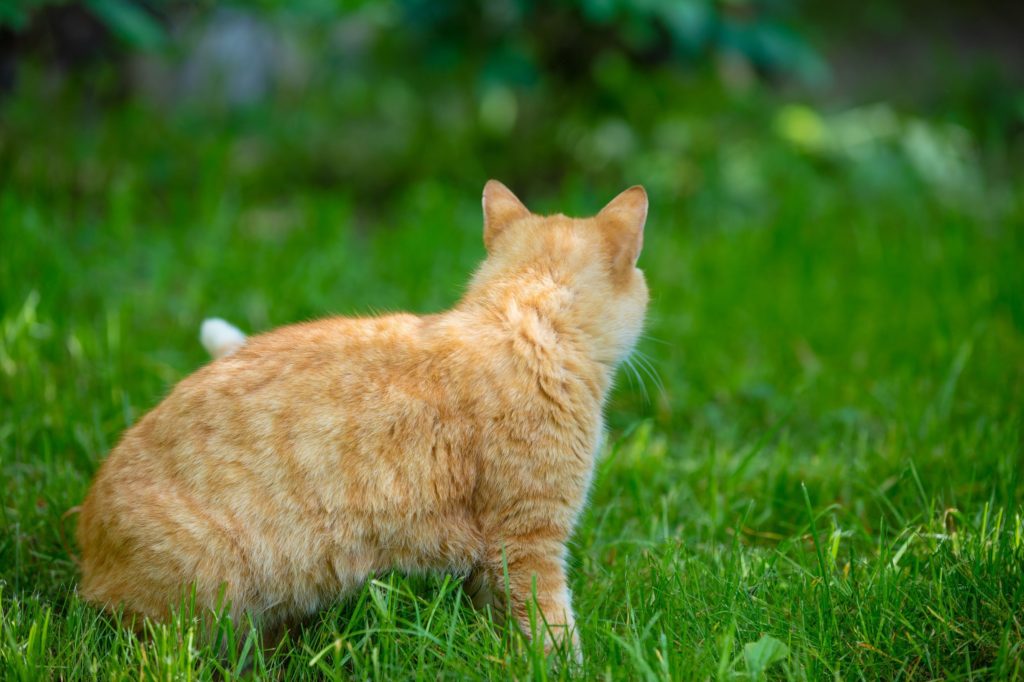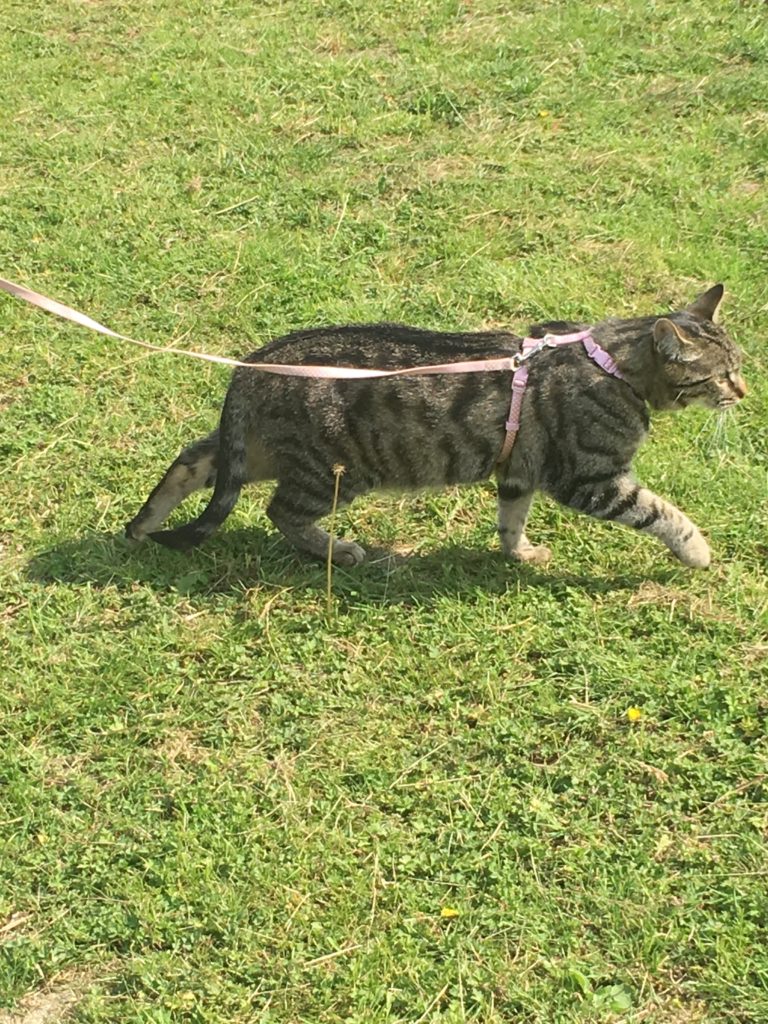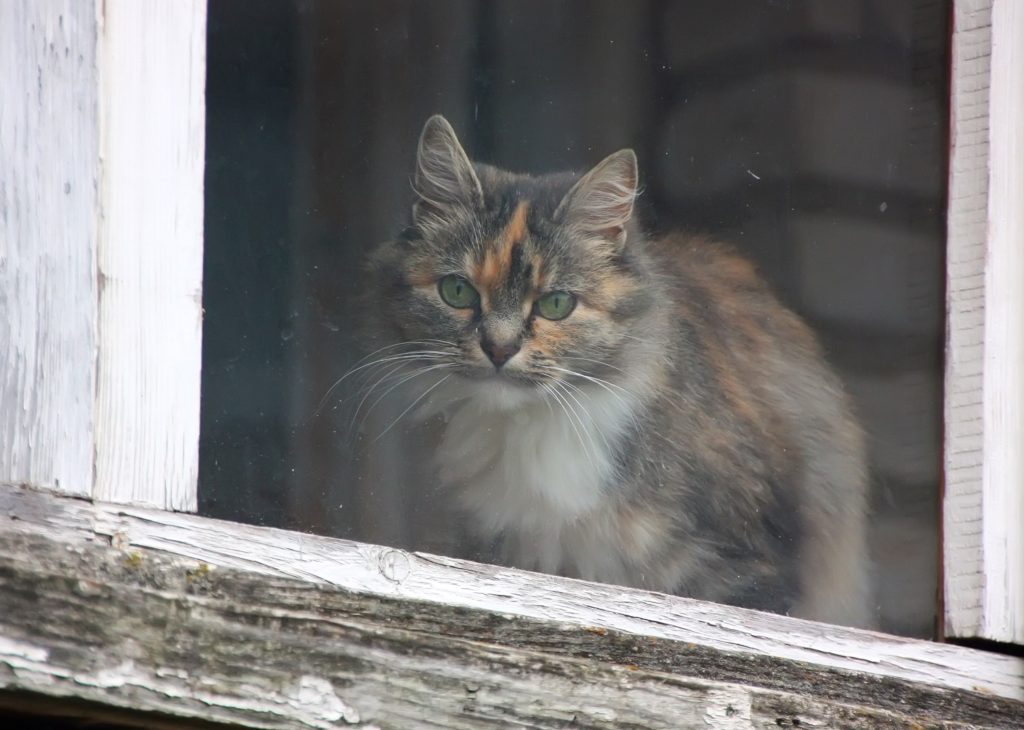
What to do if your indoor cat escapes. 8 immediate steps to take!
It’s every indoor cat owner’s worst nightmare! A window accidentally left open or a mischievous cat sneaking up behind you as you open the door – and in a second your precious indoor cat is outside! Despite all the best intentions and safety measures, indoor cats can sometimes escape. If you are present the moment that your cat escapes, then hopefully it will be a quick and easy task of picking them up and bringing them back indoors. But what if your cat will not let you catch them, or even worse, you have no idea where they have gone. Here are some tips to getting your indoor cat back indoors safely and as quickly as possible.

8 immediate steps after you realize your indoor cat has escaped
1. Do not panic!
This is the first golden rule – do not panic! If your cat is nearby, or hiding somewhere, sensing fear and panic may cause your cat to run further away.
2. Do not make any sudden moves
Running around wildly outside, shouting, and appearing frantic will not be helpful. A cat who has never been outside before, is likely to be very nervous and wary of her new surroundings. She may just want to bolt back home but seeing or sensing sudden movements and loud noises may simply cause them to run for shelter.
3. Leave the door or window open
Whatever was the gateway of escape, ensure that this means is available for her return. As explained above, she may simply want to bolt straight back indoors, and quick easy access back through where she escaped will certainly be the easiest route.
4. Step away from the door or window
Calmly, and cautiously, step away from the open door or window. It is best to step outside, moving away from the door. If your escaped kitty then decides to bolt back indoors in fear, she will see the route ahead as clear, quiet and danger free.
5. Approach your cat slowly and calmly
If you can see your cat, do not chase her. This may cause her to run away. Whether she is busy investigating the new smells and textures of the outside world or cowering behind a bush in fear, any approach should be done slowly and with caution. Call their name softly to see if she will come to you.
6. Call their name
In a calm, gentle voice simply call their name. Your voice will be familiar and they will recognize their name being called.
7. Entice with treats or a favorite toy
If your cat is a fan of cat treats, then a shaking of the cat treats bag may be enough to tempt her back in. The same goes for a favorite toy, try to entice them towards you with these offerings.
8. Time and patience
The one time that our indoor cat escaped, it took nearly an hour and a half of patience, watching and enticing to get her to return indoors. After the initial shock and fear of being outside, she became very inquisitive and was quite happy investigating every smell, texture, and new objects! Regardless of the time it takes, keeping your indoor cat in your sight is key.

What to do if you can’t find your indoor cat
The chances are that your cat has not gone very far at all. It may seem like she’s completely vanished, but cats can hide extremely well. If the whole escape incident has frightened them, finding a safe spot and staying hidden will be their immediate priority.
If you realize your cat has escaped soon after the escape, then it is highly likely that she is very close indeed. As time passes, braver cats may wander a little further but timid cat are likely to stay close. Carry out the tips listed in the first section – stay calm, call their name, entice with treats etc. Leave their litter box and anything with their scent on it outside. This may help guide them if they have got a little lost and disorientated. Also leave items with your scents on them too, a jumper or a blanket of yours – they may identify this scent and head towards the familiarity and comfort that they know.
A frightened cat can stay hidden for quite some time. If feeling scared, they are more likely to venture out at dusk. If possible, keep the door or window open for easy access on their return. Warming some cat food makes the aroma stronger and this may entice them home especially as hunger will inevitably kick in. This is also a good time to go out searching with a flashlight. Standing still, quietly, may well reveal some nearby rustling or meowing and reveal the location of your hiding cat.
As time goes on then it is time to expand the search. The following actions are also useful:
- Ask neighbors to check their sheds and gardens.
- Put posters up with a picture of your missing cat and a contact telephone number.
- Put notices on local social media sites.
- Contact any animal rescue centers and veterinary practices to see if anyone has handed your cat in.
Checklist for preventing your indoor cat to escape
To ensure your cat never escapes, the following check list is helpful:
- Ensure any open windows have secure screens.
- Brief all family members, especially children, of the importance of being extra careful when leaving or entering the home.
- It is a good idea to have indoor cats microchipped too. If they do happen to escape, they can be identified if handed into a vet or animal rescue center.
- An identification collar can also help identify your cat quickly and know how to contact you.
Providing safe outside time for your indoor cat
An indoor cat can live perfectly happy and content without ever venturing outside. Each cat is different, some may be content indoors whilst others may crave some outside time. It is very important to ensure that they all cats are mentally and physically stimulated to avoid stress, anxiety or boredom setting in. The natural instincts of a cat include hunting prey, discovering new nooks and crannies, exploring textures and smells and marking their territory. By allowing our cat a safe controlled experience of the outside these instincts can be satisfied. There are many ways an indoor cat can have some quality, safe outside time. We have explored these in some detail in our article ‘Does my indoor cat need outside time?’.
Some of these options include:
A catio
A catio is an outdoor enclosure for cats. It’s a safe enclosure that allows your cat outside time without exposing them to the outside dangers such as cars, predators, poisons, theft or getting lost. Check out our article ‘What is a catio’ for more information on the benefits of a catio and the story of our own catio build.
Walking on a harness or leash
Our indoor cat often enjoys time in the garden on a walking leash. This is definitely easier if it’s started from a young age.

A secured, enclosed garden
This is a system of high steel mesh fencing with a fence top barrier that fits around the perimeter of the garden. To be 100% effective and secure it is important to identify every potential jump pad such as a window ledge or shed roof, and secure even the smallest of corners or spaces where a cat could escape. There are companies who offer this service and seeking professional advice is recommended.
Cat run
This can be a permanent feature in your garden or a temporary one. A secure playpen, gazebo, tunnel or enclosure will enable your cat to enjoy some garden sunshine.
Carrying your cat outside
Why not simply carry your cat in your arms as you stroll in the garden? This is only recommended if your cat is calm and happy to be handled and carried.
Placing your cat in a personal cat carrier
Personal cat carriers are becoming increasingly popular especially with people who travel with their cats. They are great if you want to explore somewhere further than your back garden with your cat. A cat carrier can transport them there safely and then a harness on your cat will enable you both to enjoy some new adventures.
Taking your cat for walks in a walker or stroller
Although we don’t have a cat stroller, we do adore this idea! Many people now use a cat carrier. But if carrying your cat on your back isn’t suitable then a secure, a cat appropriate stroller can be an useful alterative.
These options vary greatly in effort, cost and suitability. Choose what best suits your cat and your lifestyle and don’t be afraid to use more than one method.
______________________________________________________________________________________________________________________________________
Other articles you may find useful
Can I train my cat to come home? 7 top tips!
Are cats loyal? Tales of loyal cats






